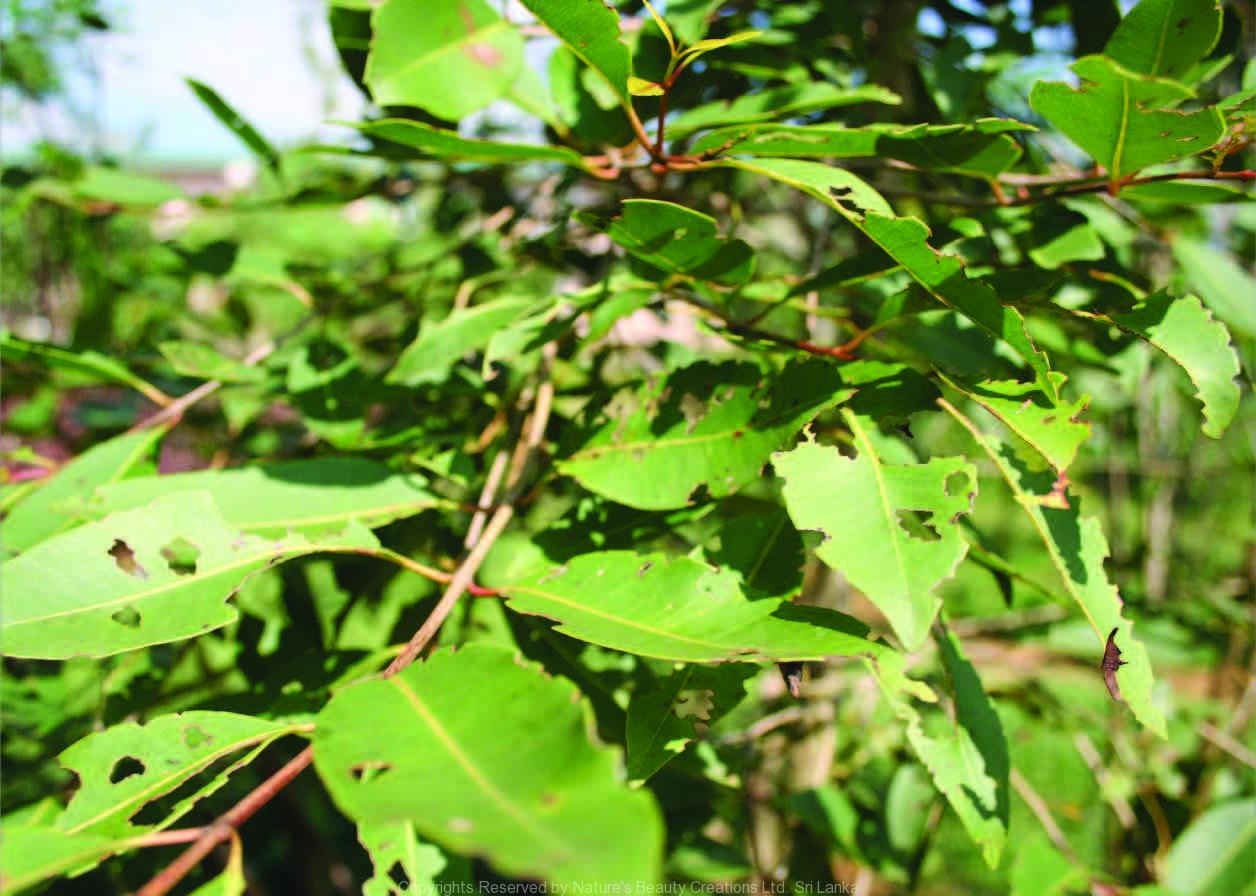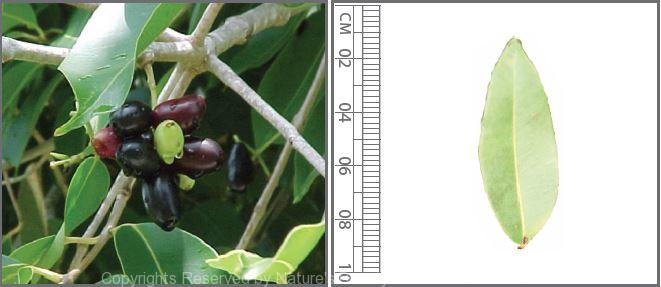

Traditional Knowledge
Useful plant parts :
Bark, ripe fruit and seed
Uses in traditional medicine :
- Infusionof the dried seed powder stored in a closed bottle is taken for diabetes
- Bark is used for diarrhoea, dysentery and cleaning ulcers
- Mouthwash prepared of bark is used for spongy gums
- Ripe fruit is used for enlarged spleen, chronic diarrhoea and diabetes
Scientific Research
Chemical constituents:
Phenolic acids: gallic, ellagic acid, tannins: corilagin and related ellagitannins, glucose esters of gallic acid: 1-galloyl glucose, 3-galloyl glucose, flavonoid: quercetin from seeds
Bioactivity :
Ethanol extract of stem bark: anti-inflammatory; aqueous extract of ripe fruit skin: antioxidative; essential oils of leaves: antibacterial; acetone and aqueous extracts of seed kernel: antidiabetic, α-glucosidase inhibitor and improves glucose tolerance; dichloromethane and alcohol extract of leaves: protection against radiation induced DNA damage, anti-quorum sensing activity; tannins from bark: gastroprotective and antiulcerogenic
Clinical:
Note :
Ripe fruits are edible
Caution : Ayyanar, M. and Subash-Babu, P., (2012), Syzygium cumini (L.) Skeels: A review of its phytochemical constituents and traditional uses, Asian Pac J Trop Biomed, 2(3), 240-6
Banerjee, A. et al., (2005), In vitro study of antioxidant activity of Syzygium cumini fruit, Food Chemistry, 90, 727–733.
Bhatia, I. S. and Bajaj, K. L., (1975), Chemical constituents of the seeds and bark of Syzygium cumini, Planta Med, 28(8), 346-352.
Jagetia, G. C. and Baliga, M. S., (2002), Syzygium cumini (Jamun) reduces the radiation-induced DNA damage in the cultured human peripheral blood lymphocytes: a preliminary study, Toxicology Letters, 132(1), 19–25.
Muruganandan, S. et al., (2001), Anti-inflammatory activity of Syzygium cumini bark, Fitoterapia, 72, 369-375.
Nair, R. B., and Santhakumari, G., (1986) Anti - diabetic activity of the seed kernel of syzygium cumini Linn, Anc Sci Life, 6(2), 80-4.
Ramirez, R. et al., (2003), The gastroprotective effect of tannins extracted from duhat (Syzygium cumini Skeels) bark on HCl/ethanol induced gastric mucosal injury in Sprague- Dawley rats, Clinical Hemorheology and Microcirculation, 29(3-4), 253-261.
Shafia, P. M. et al., (2002), Antibacterial activity of Syzygium cumini and Syzygium travancoricum leaf essential oils, Fitoterapia, 73, 414-416.
Shinde, J. et al., (2008), α-Glucosidase inhibitory activity of Syzygium cumini (Linn.) Skeels seed kernel in vitro and in Goto–Kakizaki (GK) rats, Carbohydrate Research, 343, 1278–1281.
Srivastava, S. and Chandra, D., (2013), Pharmacological potentials of Syzygium cumini: a review, J Sci Food Agric, 93(9), 2084-93.
Vasavi, H. S. et al., (2013), Inhibition of quorum sensing in Chromobac- terium violaceum by Syzygium cumini L. and Pimenta dioica L, Asian Pac J Trop Biomed, 3(12), 954-9.
Copyrights Reserved By
Natures Beauty Creations



